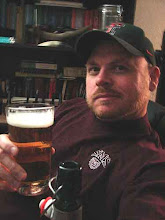To accomplish his analysis of scientific communication, Gross conducts a series of case studies centered on specific scientific texts to demonstrate the use of rhetorical conventions, by the authors, to argue for their findings and persuade their peers to accept their positions. In doing so, Gross implements rigorous rhetorical analysis to illuminate how the writers of scientific texts discovered, presented, and contested the results of their search for understanding. In this book, Gross presents his findings in four major sections.
In Part One, Gross defends the necessity for a rhetorical analysis of science writing. He explores the history of rhetoric of science and exposes how rhetoric is used to promote scientific writing and the techniques of persuasion used to sway audiences to accept findings and theories. Specifically, Gross provides an excellent brief history of rhetoric of science in Chapter 1 that demonstrates a personal knowledge of how this valuable academic discipline developed a critical voice within scientific writing.
Gross then turns his attention to explore the limits of rhetorical analysis of science. In Part Two, he explores the rhetorical construct of taxonomy as persuasion to accept evolutionary theory and how both Newton and Descartes used rhetoric to each promote their own theories of optics. Although Gross does not assert that a full rhetorical description of scientific texts is possible, he does use these case studies to suggest that “rhetoric is a discipline; moreover, its disciplinary status entitles us to speak of all written and visual records of the scientific from a rhetorical perspective” (p. 78).
In Part Three, Gross explores the range of rhetorical analysis of science by examining how evolution evolved in Darwin’s notebooks, articulating the importance of peer-review in certifying consensus within a scientific community, and tracing heliocentricity as the origin of rational conversation which Gross asserts was an essential ingredient to the spread of Copernicanism in the late sixteenth and early seventeenth centuries. In all, Gross conducts five case studies in this section not to demonstrate that science is rhetoric but that no one discipline “can be relied on to provide a fully adequate explanation of what science is and how it works” (p. 141).
Finally, Gross attempts to place rhetoric within scientific inquiry by exploring the compatibility of rhetoric and sociology as well as psychology and the history of science. Of particular value in Part Four is Chapter 11 where Gross analyzes the Newton-Leibniz debate to demonstrate the role of priority in the social invention of scientific history. Because scientific advancements may happen nearly simultaneously, “the actual effect of an emphasis on priority may undermine its intended effect, the encouragement of scientific advance. Every scientific paper instantiates the tension created by these opposing tendencies” (p. 178).
Starring The Text represents a major re-tooling of Gross’ earlier book, The Rhetoric of Science and constitutes a shift from arguments anchored in the rhetorical to the philosophical. This book offers a major contribution to the field of rhetoric of science and is a must read for both students and scholars of this field as well as technical communicators who specialize within this context. In addition, this book offers and excellent history of rhetorical scientific criticism and should be considered as a text for the classroom.
-Safari Bob
Gross, A. G. (2006). Starring the Text: The Place of Rhetoric in Science Studies. Carbondale, Illinois: Southern Illinois University Press, 216 pp.







No comments:
Post a Comment